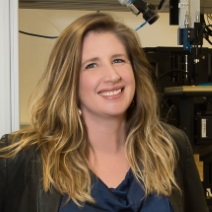For some, the Xerox Research Centre of Canada (XRCC)’s very existence will come as a revelation — a 3D-printing fuelled reinvention of a company that has been synonymous with photocopying for much of its 110-year history.
But the Mississauga-based centre, which today includes chemical synthesis, polymer processing, testing, and process engineering facilities, including a 27,000 square-foot chemical pilot plant, is actually more than 40 years old — it was founded in 1974 — and the Norwalk, Conn.-based Xerox Corp. owns no other facility quite like it, the centre’s senior materials science research and development manager, Michelle Chrétien, told ITWorldCanada.com sister publication ITBusiness.ca in a recent interview.
“We’ve been the materials science research centre for Xerox for the last 41 years,” she says proudly. “Every Xerox product that’s hit the market since the 70s contains a material or innovation that came out of this centre in Canada.”

The centre is also an early pioneer in the printable electronics industry, and has recently been reinventing itself as a contract research and development services business.
After all, the photocopying process itself relies on a flexible electronic device known as a photoreceptor drum, Chrétien says, and the centre’s work with photoreceptors also led to early work with OLEDs (organic light-emitting diodes, which can be used in flexible screens).
“Only now, instead of just doing internal research for Xerox Corporation, we’re offering our skills and expertise to third parties,” she continues. “Start-ups who are looking to partner with a big name to try something new, established companies who would like to try something without investing in the capital infrastructure required… and of course, in the printed electronics space.”
Chrétien says the XRCC’s business model can be divided into two parts: products, with the centre developing, producing, and offering a suite of electronic materials for sale; and services, which encompass research and development, process engineering, and manufacturing.
Her own department, research and development, is involved at both ends, supporting businesses across many different industries, including security, cosmetics, manufacturing – and yes, electronic materials.
“It’s quite different, I think, from what you might find in an academic lab,” she says. “Because right out of the gate we’re thinking about, ‘Is this manufacturable? Is it cost-effective? Is it green?'”
Chrétien herself manages the centre’s print integration lab, which collaborates with organizations or individuals developing new devices or materials. Sometimes that means developing a printing process for making an existing device, she says, while other times the centre’s staff will collaborate with inventors to bring their ideas to life. The XRCC can even develop new materials for startups that can’t create their devices with existing ones – then, because electronic materials tend to be high-value and low-volume, produce them on-site.
“There’s a lot of work that I think people don’t appreciate between something being invented and being on the market,” Chrétien says. “But it’s that unsexy work of process engineering – developing the process that can then be transferred to manufacturing – that our team is incredibly good at.”
Other labs at the centre include material science, where researchers first create and investigate new ideas; the chemistry research lab, where new materials are developed; the process engineering facility, where the manufacturing process is finalized; and the pilot plant itself, an adaptable facility that allows the centre to create a seemingly endless range of industrial coatings, polymers, resins, nanomaterials, inks and toners (“That’s been our bread and butter for awhile,” Chrétien admits), and just about any composite you could think of.
Visitors attending this year’s Printable, Flexible, Wearable Electronics Symposium (CPES2016), which will be held on April 19 and 20 at the Oakville, Ontario campus of Sheridan College, have been invited to sign up for a tour of the XRCC one day after the conference, on April 21.
ITBusiness.ca is a media sponsor of CPES.
